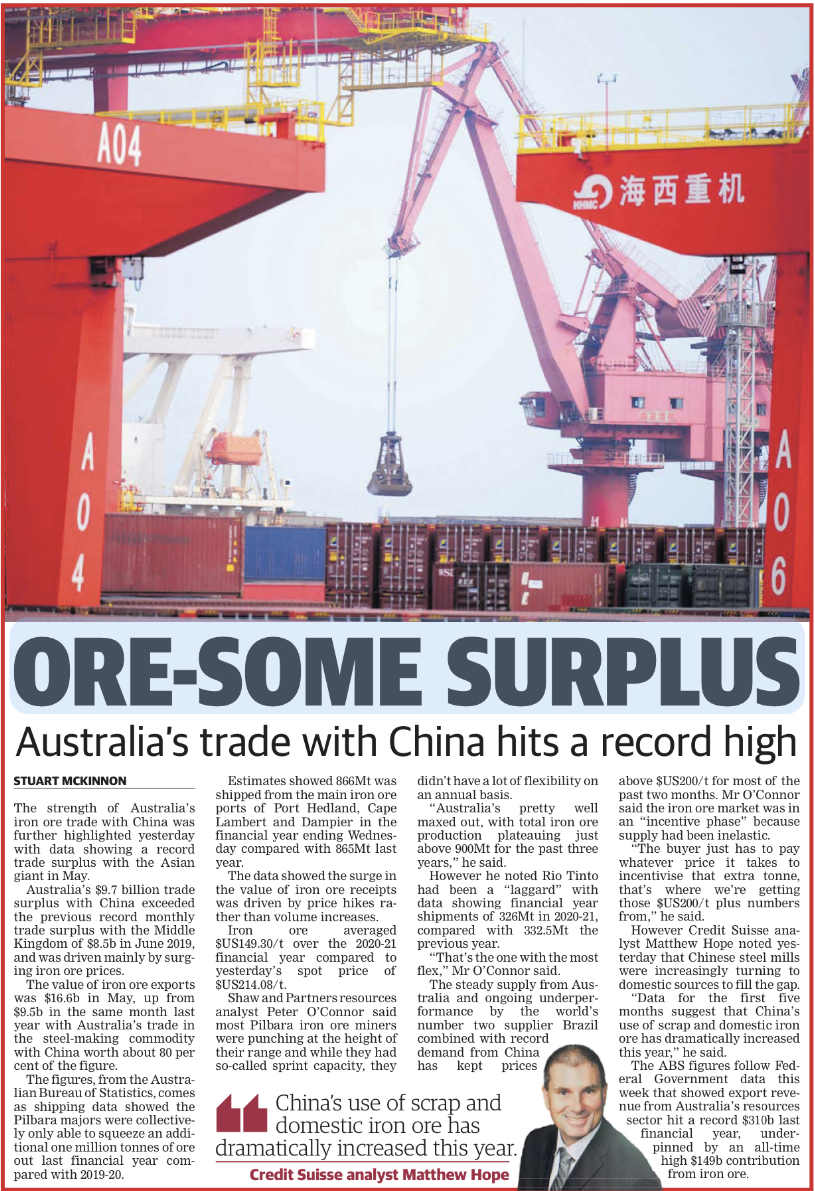
The strength of Australia’s iron ore trade with China was further highlighted today with data showing a record trade surplus with the Asian giant in May.
Australia’s $9.7 billion trade surplus with China exceeded the previous record monthly trade surplus with the Middle Kingdom of $8.5b in June 2019, and was driven mainly by surging iron ore prices.
The value of iron ore exports was $16.6b in May, up from $9.5b in the same month last year with Australia’s trade in the steel-making commodity with China worth about 80 per cent of the figure.
The data highlights the importance of the trade to both Australia and China despite deteriorating relations between the two nations that has seen trade barriers erected against local exports of barley, wine, beef, timber and copper.
The figures, from the Australian Bureau of Statistics, come as shipping data showed the Pilbara majors were collectively only able to squeeze an additional 1Mt of ore out last financial year compared with 2019-20.
Estimates show 866Mt was shipped from the main iron ore ports of Port Hedland, Cape Lambert and Dampier in the financial year ending Wednesday compared with 865Mt last year.
The data shows the surge in the value of iron ore receipts has been driven by price hikes rather than volume increases.
Iron ore averaged $US149.30/t over the 2020-21 financial year compared to yesterday’s spot price of $US214.08/t.
Shaw and Partners resources analyst Peter O’Connor said most Pilbara iron ore miners were punching at the height of their range and while they had so-called sprint capacity, they didn’t have a lot of flexibility on an annual basis.
“Australia’s pretty well maxed out, with total iron ore production plateauing just above 900Mt for the past three years,” he said.
However he noted Rio Tinto had been a “laggard” with data showing financial year shipments of 326Mt in 2020-21, compared with 332.5Mt the previous year.
“That’s the one with the most flex,” Mr O’Connor said.
The steady supply from Australia and ongoing underperformance by the world’s number two supplier Brazil combined with record demand from China has kept prices above $US200/t for most of the past two months.
Mr O’Connor said the iron ore market was in an “incentive phase” because supply had been inelastic.
“The buyer just has to pay whatever price it takes to incentivise that extra tonne, that’s where we’re getting those $US200/t plus numbers from,” he said.
However Credit Suisse analyst Matthew Hope noted yesterday that Chinese steel mills were increasingly turning to domestic sources to fill the gap.
“Data for the first five months suggest that China’s use of scrap and domestic iron ore has dramatically increased this year,” he said.
The ABS figures follow Federal Government data this week that showed export revenue from Australia’s resources sector hit a record $310b last financial year, underpinned by an all-time high $149b contribution from iron ore.